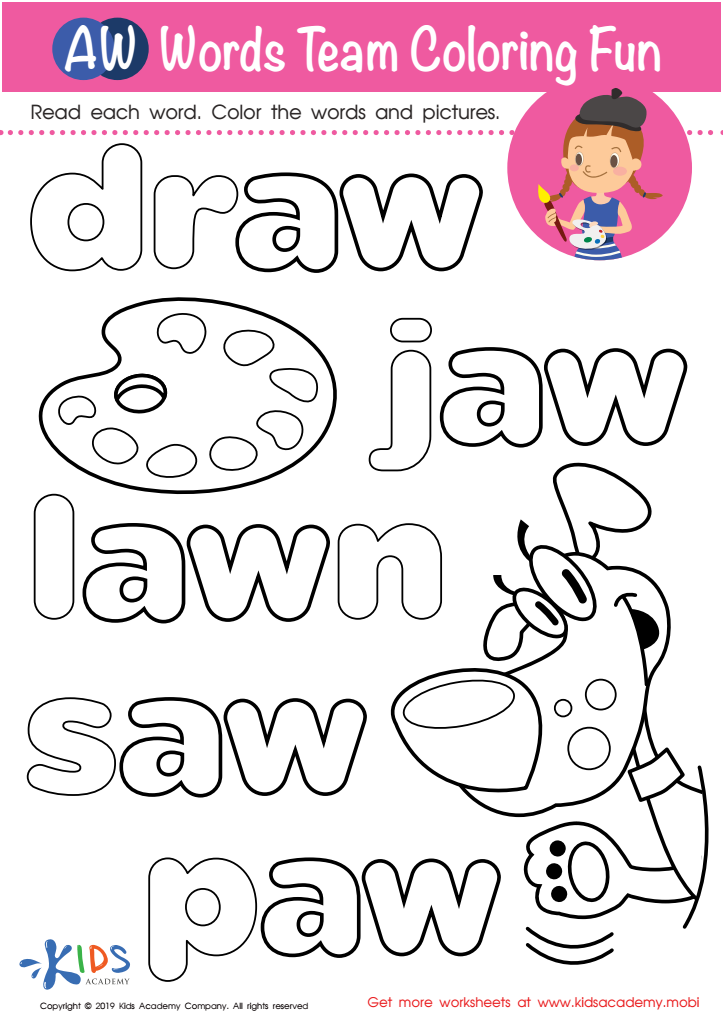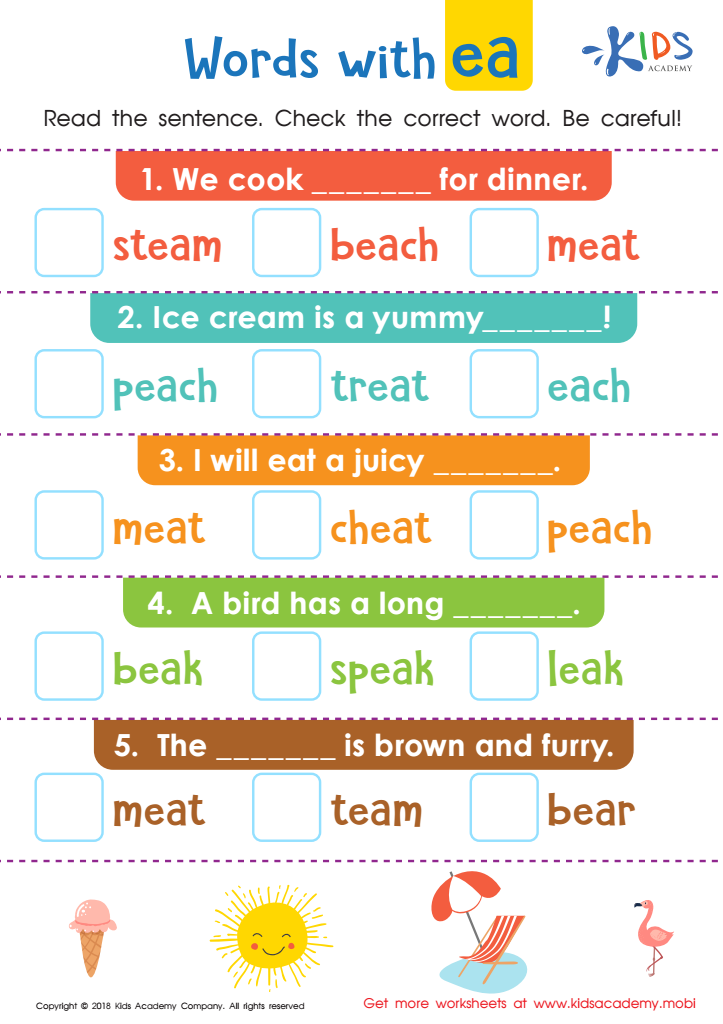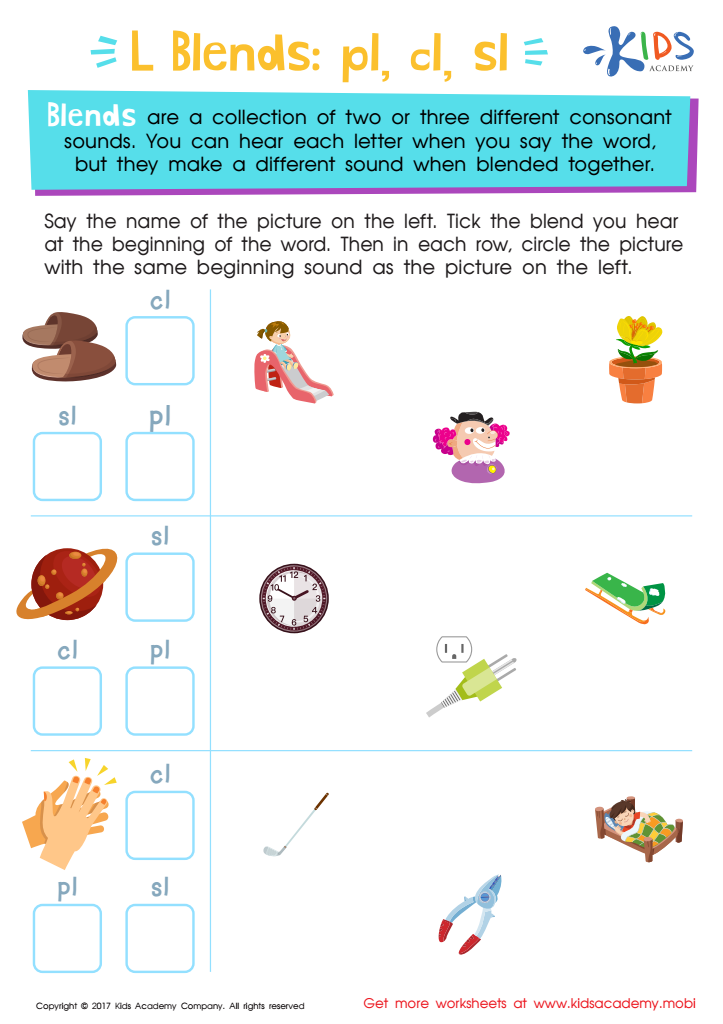Word Recognition Normal Two Letter Phonics Worksheets for Ages 5-7
5 filtered results
-
From - To
Enhance your child's reading skills with our engaging "Word Recognition Normal Two Letter Phonics Worksheets" designed for ages 5-7. These interactive worksheets focus on recognizing and blending two-letter combinations, helping young learners boost their phonics knowledge and vocabulary. Each worksheet is crafted to make learning fun and effective, featuring colorful illustrations and varied exercises that promote word recognition through play. Perfect for homeschooling or classroom use, these worksheets provide essential practice for early readers to master foundational literacy skills. Empower your child's reading journey with our thoughtfully designed worksheets that encourage confidence and love for learning.


AW Words Team Coloring Fun Worksheet


Words with ea Worksheet


L Blends: "Pl", "Cl" and "Sl" Printable


Missing Digraph: Part 2 Worksheet


Consonant Blends: "Dr" and "Tr" Printable
Word recognition is a crucial skill for children aged 5-7 as it lays the foundation for effective reading and literacy development. Two-letter phonics, encompassing vowel and consonant pairings, is especially significant during these formative years. Understanding and mastering two-letter combinations, such as “at,” “an,” “on,” and “it,” allow children to blend sounds and recognize common words, which builds their confidence in reading.
For parents and teachers, focusing on word recognition through two-letter phonics helps support children's overall language development and cognitive skills. It enhances their ability to decode words quickly and accurately, enabling smoother reading experiences and improved comprehension. Additionally, strong word recognition skills lead to greater vocabulary acquisition, as children begin to see connections between sounds and meanings.
Encouraging early phonics instruction cultivates a love for reading and fosters engagement with texts. Children who develop these skills early are more likely to become proficient readers and continue to succeed academically. Thus, investing time in teaching two-letter phonics is essential for parents and educators committed to setting a solid reading foundation. Supporting kids in developing these skills ensures they have the tools necessary for lifelong learning and literacy enjoyment.

 Assign to My Students
Assign to My Students















